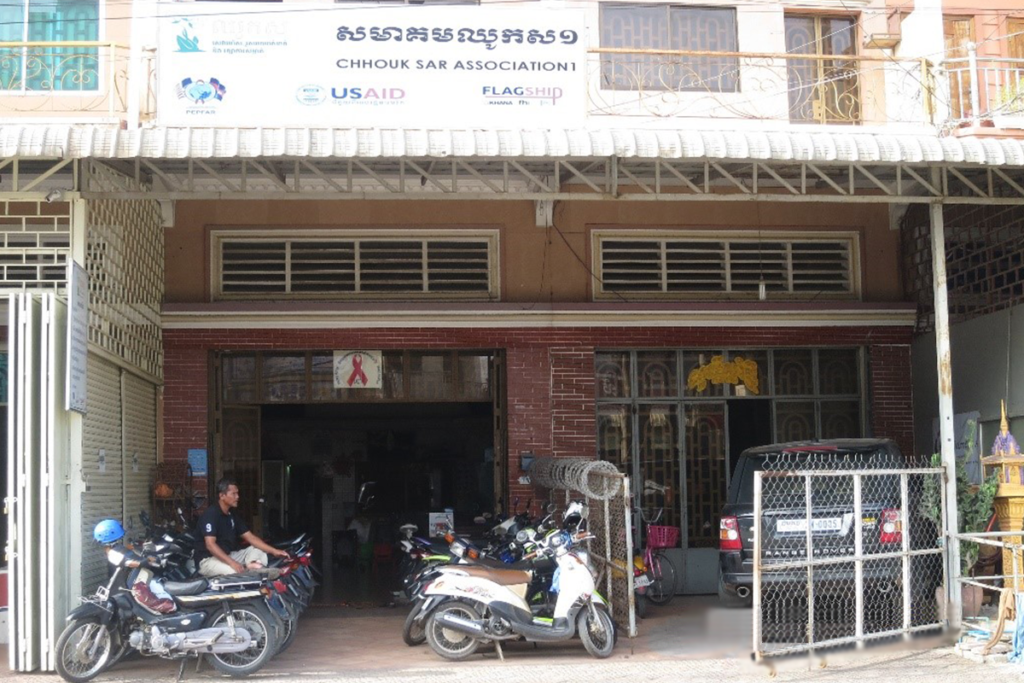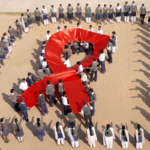Cambodia has achieved measurable success in its fight against HIV. Prevalence has dropped more than 60% from 1998 to 2015, and the number of new HIV cases fell more than 80% over the same period. However, as in many countries, going the last mile to fully eliminate the AIDS epidemic requires innovative approaches to reach individuals unaware of their HIV status – especially among hard-to-reach key populations – and link them to treatment to achieve viral load suppression.
A consortium comprised of three NGOs – KHANA, FHI 360, and Population Services International (PSI) – working with the HIV/AIDS Flagship Project funded by USAID came up with an intervention study idea. Would we detect more newly identified HIV cases if we asked people that walked-in for HIV testing (presumably high-risk) to refer their peers whom they think are at risk for HIV infection for testing? We hypothesized yes. If we were right, it would be brilliant and we could help Cambodia’s National Centre for HIV/AIDS, Dermatology and STD (NCHADS) scale-up the intervention and avert hundreds of new infections every year. The same Risk Tracing Snowball Approach (RTSA) had proven to be successful among high-risk heterosexuals in the United States, among drug users in Greece, and heterosexual couples in China. We set out to determine if it would work in Cambodia, and I describe our intervention design and evaluation outcomes in this blog post. The full results are published in BMC Infectious Disease.
Methodology
Our study evaluated the effectiveness of the RTSA intervention: 1) to increase the rate of newly identified HIV cases in key populations and the general population socially connected to them; and 2) as compared to the walk-in group, to increase the number of HIV tests and early HIV case detection by comparing CD4 counts between clients. Key populations include female entertainment workers (sex workers), men who have sex with men, transgender women, and people who use drugs.
The intervention was conducted at two clinics, Chhouk Sar I and Chhouk Sar II, in Phnom Penh, Cambodia, for the six months between April 1 and September 30, 2016. The clinics are known as NGO clinics, and they have been operated by the Chhouk Sar Association since 2010. These two clinics are designed to be key population-friendly HIV service providers.
All clients presenting for HIV testing at the clinics were invited to participate in the intervention if they reported never-tested for HIV in the past three months and were at least 18 years old. If the client agreed to participate, we called them a seed and supplied them with five coupons to refer their peers (recruits) whom they think are at risk of HIV infection for testing.
When a recruit came with a coupon for HIV testing and risk assessment interview at the Chhouk Sar clinics, our team provided a $2.50 incentive to both the seed and the recruit. A seed could only receive a maximum of $12.50; there was no multiple-level incentive applied. Then, the recruits were offered the same opportunity as the seeds. Their role in the intervention was the same – receiving five coupons to refer five peers. If these new recruiters successfully referred their peers, they received the $2.50 incentive per successful referral. We repeated this procedure without limiting the wave length of referral. We set the coupon’s expiration date at September 30, 2016.
Intervention outcomes
During the six months of the RTSA intervention, the number of individuals tested for HIV increased by 340% and 271%, when compared to pre-and post-implementation, respectively.
However, we found a significantly lower rate of newly identified HIV positive cases among the intervention group compared to pre-implementation (1.8% vs. 4.8%, p < 0.001), during (1.8% vs. 3.2%, p = 0.04), and post-implementation (1.8% vs. 3.7%, p = 0.006).
Even though the intervention group had a lower rate of newly identified HIV positive cases, we found the absolute number from both the RTSA and walk-in approach during intervention implementation increased by 63% and 66% compared to pre- and post-implementation, respectively. These considered the sample time frame of six months.
We found the average CD4 count of newly identified HIV positive cases among the intervention group to be much higher than the walk-in group (540 vs. 355 cells/mm3), but this is not statistically significant.
Besides comparing the outcomes between the intervention and walk-in approaches, our team was also interested in how the referral process worked. We noticed that the majority of the recruits coming with a coupon were referred by clients (recruiters) who had an HIV negative result. A total of 1,532 clients out of 1,572 clients were referred by HIV negative clients. The HIV yield (the rate of newly identified HIV positive cases) among these individuals is 1.8%. Of those clients who already knew their HIV-positive status, we detected a high rate of newly identified HIV positive cases at 5.2%. However, they referred only a handful of individuals (n = 19). One critical finding to note is that the newly identified HIV positive clients did not recruit any other newly identified HIV positive individuals.
We then visualized Table 1 into a graph as shown in Figure 5 to illustrate how the referrals were networked. Red represents newly identified HIV positive individuals; green represents HIV negative individuals; and blue represents those already aware of their HIV positive status. The pattern of recruitment shows that the newly identified HIV positive individuals recruited few new clients and no one HIV positive.
Discussion
As you can see from the results above, the RTSA intervention did not work for all categories. Our hypothesis was partially right. If we solely sought to increase the HIV yield in the intervention compared to the walk-in group, then this is a failed intervention. However, we did boost HIV case detection overall and consider the outcomes of the intervention successful for four reasons:
- The number of newly identified HIV cases almost doubled during the intervention.
- The CD4 count of the intervention group was much higher than the walk-in group, indicating that the RTSA could detect HIV cases earlier than the walk-in group.
- The HIV yield in the intervention group was much higher than the yield detected by a separate HIV testing outreach approach among key populations in 10 out of 25 provinces in Cambodia. The yield reported by the outreach approach never reached 1.0% during its three-year implementation. See here and here.
- The HIV yield in the intervention group was still reasonable when compared to the national HIV prevalence: female entertainment workers (3.8% vs. 4.6%), men who have sex with men (1.7% vs. 2.3%), transgender women (2.2% vs. 5.9%), people who use drugs (1.7% vs. 4.1%), except people who inject drugs (0% vs. 25%), respectively.
Further research is needed to better understand the cost-effectiveness of the effort. However, we conclude that the RTSA intervention works moderately well in identifying undiagnosed HIV cases among key populations. As countries like Cambodia work diligently to end the AIDS epidemic by identifying and linking high-risk populations – like key populations – to treatment, innovative interventions like RTSA are increasingly important.
Photo credit: Chhim/FHI 360









